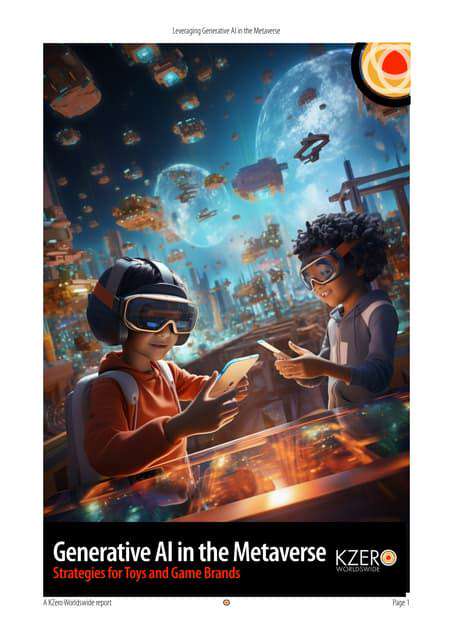The Role of Sound in Crafting Immersive Worlds

Sound Design and Atmosphere
Sound design plays a crucial role in shaping the atmosphere and emotional impact of a narrative. A Well-crafted soundscape can transport the listener to another world, evoke specific feelings, and enhance the overall storytelling experience. Careful consideration of sound effects, music, and ambient noise contributes significantly to the immersion of the audience. The subtle incorporation of sounds can subtly suggest time of day, location, or even the emotional state of characters.
From the gentle rustling of leaves to the thunderous roar of a storm, sound provides a powerful sensory element that can heighten the audience's engagement with the story. The effective use of sound design is not simply about adding noise; it's about creating an environment that complements and enhances the visual narrative.
Sound as a Character Indicator
Sound can be a powerful tool for revealing character traits and motivations. A character's voice, their mannerisms when speaking, and their reactions to different sounds can reveal a lot about their personality. For example, a character who reacts with fear to sudden noises might suggest a timid or anxious nature. Conversely, someone who is unfazed by loud noises could portray a sense of resilience or even indifference.
Consider how a character's interactions with sound shape their emotional journey. The character's responses to different sounds can reveal hidden fears, desires, and even moral ambiguities.
Sound for Building Tension and Suspense
A well-placed sound effect or piece of music can effectively build anticipation and create a sense of suspense. The subtle increase in the volume of a heartbeat or the use of ominous music can effectively heighten the tension for the audience. A crescendo of sound effects can build to a dramatic climax, while a sudden drop in sound can create a moment of unease or horror. This strategic use of sound can keep the audience on the edge of their seats, eager to discover what happens next.
Sound for Emphasizing Visual Elements
Sound can work in conjunction with visual elements to amplify the impact of the story. A dramatic visual event, like a character falling from a height, can be further emphasized by the sound of the fall, the impact, and the subsequent silence. By combining sound with visuals, filmmakers can create a more immersive and engaging experience. The use of sound can also underscore the importance of specific actions or objects in the narrative, drawing the audience's attention to critical details.
Sound for Establishing and Maintaining Setting
Sound is inextricably linked to the setting of a story. The sounds of a bustling marketplace, the hushed whispers of a library, or the howling wind in a deserted forest can all contribute to a sense of place. Sound creates a strong sense of immersion and helps the audience to visualize the environment. Consistent sound design helps establish the mood and atmosphere of a given setting, immersing the audience in the story's world. The use of specific sounds can help to create a strong connection between the audience and the story's surroundings.
The Connected TV (CTV) landscape is a rapidly evolving digital advertising frontier, presenting both exciting opportunities and complex challenges for advertisers. Understanding the nuances of this ecosystem is crucial for maximizing campaign effectiveness. CTV encompasses a wide range of devices, from smart TVs and streaming media players to game consoles and even smartphones, all offering unique user demographics and viewing habits. This diverse range of devices requires a tailored approach to advertising strategies, moving beyond traditional television advertising models.
Sound Effects and Interactions: Creating Meaningful Player Experience
Sound Design for Immersion
Effective sound design is crucial for creating a truly immersive gaming experience. Sound effects, whether subtle ambient noises or dramatic explosions, play a vital role in conveying information, establishing atmosphere, and enhancing the player's emotional connection to the game world. Well-placed sounds can draw the player into the action, alerting them to dangers, guiding them through environments, and even influencing their emotional responses to events in the game. Careful consideration of the sound design, including the volume, pitch, and spatialization of sounds, is essential for creating a believable and engaging experience.
Beyond simple sound effects, incorporating a dynamic soundscape can greatly enhance immersion. Imagine the gentle rustling of leaves in a forest scene transitioning to the panicked cries of animals as a predator approaches. These subtle changes in the audio environment can create a sense of realism and depth, making the game world feel more alive and responsive to the player's actions. A well-designed soundscape can significantly contribute to the overall atmosphere and emotional impact of the game.
Interactive Audio Feedback
Interactive audio feedback is a powerful tool for enhancing player engagement and providing meaningful information. This involves tailoring the sounds and music to the player's actions, offering immediate and informative feedback on their choices and progress. For example, a satisfying clink sound when collecting an item, or a suspenseful musical crescendo when approaching a dangerous enemy, keeps the player engaged and provides valuable information about the game state. This constant stream of audio cues helps maintain a sense of agency and involvement, making the game feel more responsive and intuitive.
Furthermore, interactive audio feedback can be used to provide context and meaning to the game world. A specific sound effect triggered by a player opening a locked chest could reveal the type of treasure within. Or, a change in the ambient soundscape could signal a shift in the environment's mood or state of danger. This contextualization of audio feedback strengthens the connection between the player and the game world, making the experience more meaningful and engaging.
Emotional Impact and Storytelling
Music and sound effects can profoundly impact the player's emotional response to the game. A haunting melody playing during a tense encounter can heighten the suspense, while a triumphant fanfare following a victory can evoke feelings of accomplishment. The careful selection and use of music and sound effects can create a powerful narrative experience, going beyond simple mechanics and contributing to the overall story and emotional arc of the game. These are not just background noises; they are integral parts of the storytelling process. By understanding the emotional responses that certain sounds evoke, developers can craft a more impactful and memorable experience for the player.
The ability to evoke a range of emotions through sound design allows for greater depth and complexity in the player's experience. From feelings of joy and excitement to fear and sadness, sound can deeply influence the player's emotional connection with the game's narrative. Moreover, the use of evocative sounds can help bridge gaps in the narrative, adding layers of meaning that go beyond the visual elements alone. This rich use of auditory cues can significantly deepen the emotional impact and enhance the overall quality of the player's experience.
Read more about The Role of Sound in Crafting Immersive Worlds
Hot Recommendations
- Immersive Culinary Arts: Exploring Digital Flavors
- The Business of Fan Funded Projects in Entertainment
- Real Time AI Powered Dialogue Generation in Games
- Legal Challenges in User Generated Content Disclaimers
- Fan Fiction to Screenplays: User Driven Adaptation
- The Evolution of User Driven Media into Global Entertainment
- The Ethics of AI in Copyright Protection
- Building Immersive Narratives for Corporate Training
- The Impact of AI on Music Discovery Platforms
- AI for Audience Analytics and Personalized Content











